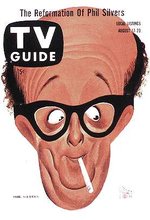Caricature
|
|
Greenspancar.jpg

A caricature is a humorous illustration that exaggerates or distorts the basic essence of a person or thing to create an easily identifiable visual likeness.
| Contents |
Definition
Although caricatures can be made of inanimate objects such as cars or buildings, the art form is usually reserved for illustrations of people, especially celebrities and politicians.
Caricatures can be insulting or complimentary and can serve a political purpose or be drawn solely for entertainment. Caricatures of politicians are commonly used in editorial cartoons, while caricatures of movie stars are often found in entertainment magazines.
The word "caricature" can also apply to a person or thing that displays behaviour or mannerisms that are ridiculously exaggerated and overly stereotypical.
An early definition of the origins of 'caricature', an Italian word meaning 'to load', occurs in the English doctor Sir Thomas Browne's Christian Morals (first pub.1716)
- Expose not thy self by four-footed manners unto monstrous draughts, and Caricatura representations.
with the foot-note -
- When Mens' faces are drawn with resemblance to some other Animals, the Italians call it, to be drawn in Caricatura
A Brief History of Caricature
The beginner of caricature is considered to be Leonardo da Vinci, who actively sought people with deformities to use as models.
The inventor of caricature as an independent art form was, according to seventeenth century sources, the Bolognese history painter, Annibale Carracci. A writer calling himself Mosini recorded Annibale's 'theory' of caricature as being the ultimate antithesis of beauty: 'una bella... perfetta deformità.' Like beauty in art, Annibale held, it was based on selection and synthesis. The artist was to devise it, in a playful spirit like that of Nature, whenever She offered him suitable models. The point was to offer an impression of the original which was more striking than a portrait. Gianlorenzo Bernini (1598-1680), one of the great early practitioners, was favored by the members of the papal court for his ability to depict the essence of a person in 'three or four strokes.'(In fact, the word caricature comes from the Italian caricare, "to load," i.e., the caricaturist's aim is to invest his image with as much meaning as possible.)
Caricature, therefore, experienced its firt successes in the closed aristocratic circles of France and Italy, where the such portraits could be passed about for mutual enjoyment.
This aura of privelege (for both those depicted and those viewing the caricature) passed on to England during the middle of the 18th century, when caricature enjoyed its first wave of popularity there. The first book on caricature drawing to be published in England was Mary Darly's A Book of Caricaturas (c. 1762). Probably the greatest practitioner of the art of caricature in 18th-century Britain was James Gillray(1757-1815). See the Tate Gallery's exhibit James Gillray: The Art of Caricature (http://www.tate.org.uk/britain/exhibitions/gillray/)
The art form gained further popularity in the early 19th century, when satirical drawings of politicians and local celebrities would be printed in newspapers. Caricatures would often be less than warmly received by their powerful targets, and for many years the art form was one of anonymous mischief.
In the years after World War I the art form experienced a renaissance in the United States, and in some magazines caricatures became more common and in higher demand than actual photographs. A new wave of artists like Al Hirschfeld and Miguel Covarrubias showed that caricatures could be fun, colorful, and graceful, and not always the crude, vicious insults found on the editorial page. In the UK Punch magazine kept the tradition alive through the 1950 to 1980 period. The cartoonist Steve Bell maintained the tradition thereafter to great effect. The puppet show Spitting Image on British television during the 1980s brought an awareness of caricature to a new generation, combining rod-operated puppets with accurate vocal impressions. Politicians, media stars and sporting celebrities remained the main targets and the grey finish of a much used John Major puppet played a very significant role in establishing his unadventurous public image in the UK.
Today, the art of caricature is still around, though nowhere near as prevalent as the "Golden Age" of the 20's and 30's. In recent years there has been a rise of amateur "On-the-spot Caricaturists" who can be found on street corners or fairs and will draw a quick sketch of anyone willing to pay their fee.
Some Notable Pracitioners
Honoré Daumier (1808-1879, French) can be considered the father of caricature. During his life, he created over 4'000 lithographs, most of them caricatures on political, social and everyday themes. They were published in the daily French newspapers (Le Charivari, La Caricature etc.)
More about Caricatures can be found on the Honoré DAUMIER (http://www.daumier.org) website.
